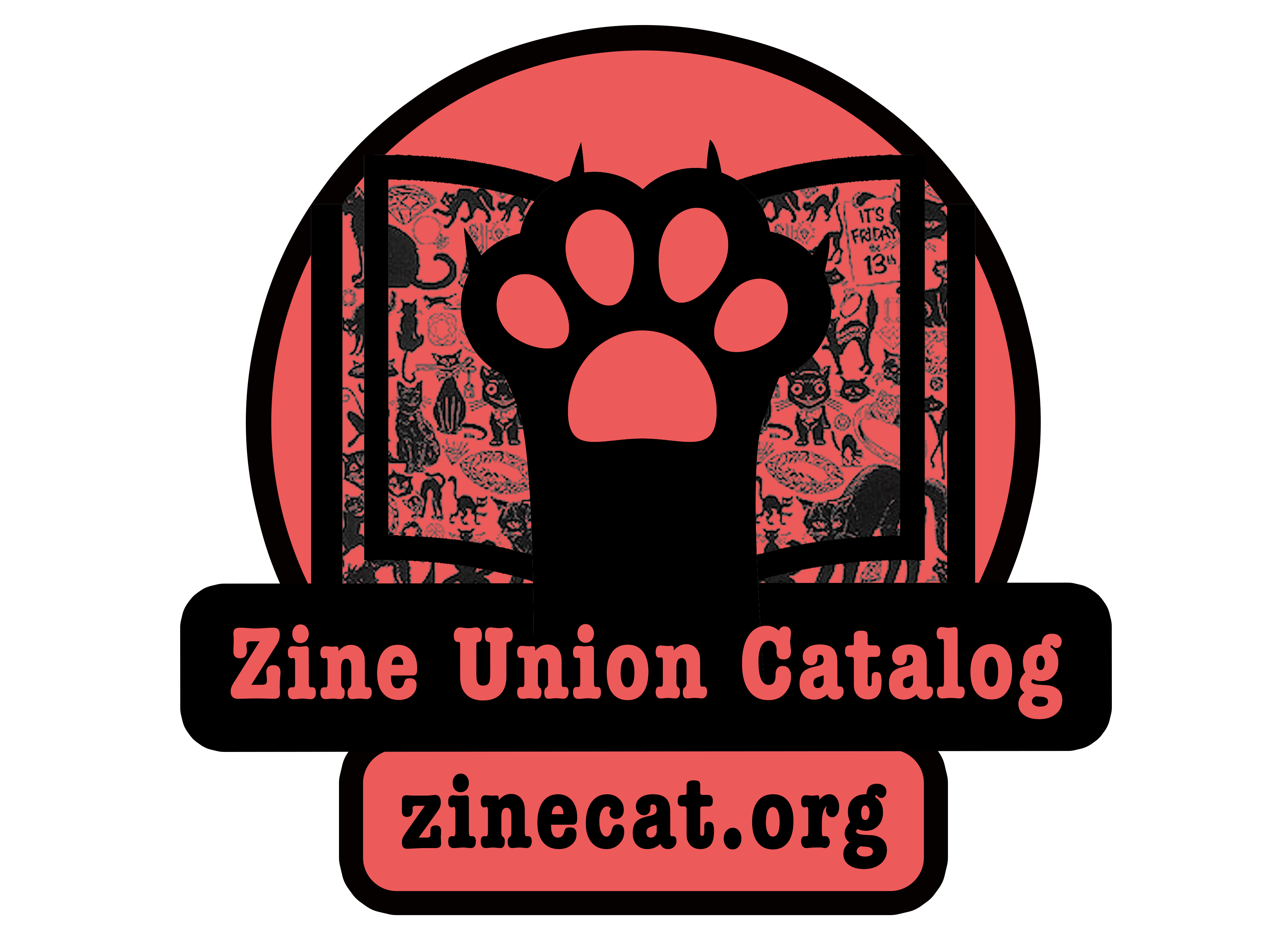We recently submitted a grant application to the National Endowment for the Humanities and wanted to share with our readers the project narrative for ZineCat. Take a look below to learn more about our evolving project, or you can check out a copy of our application that we’ve shared on Shared AuthorityVol. 2.5 here.
Introduction
The Zine Union Catalog (ZineCat) is a shared catalog dedicated to zines. A zine, short for fanzine or magazine, is a DIY publishing medium traditionally used by subculture communities for sharing their lives and knowledge. A shared catalog is a resource where libraries can mingle cataloging and holdings information. Zines are primary sources for humanities, social sciences, and other fields, but due to the diverse standards and practices among libraries, archives, and community organizations that collect and maintain them, accessing zines through traditional research discovery systems has been challenging. ZineCat empowers researchers to discover zine holdings by searching a single catalog, helps librarians copy catalog records to eliminate duplication of effort, and facilitates lending. ZineCat serves educators, researchers, librarians, archivists, zine makers, and anyone with an interest in zines.
ZineCat contains three primary components:
- Catalog records for zine titles (descriptive metadata), which give identifying (title, creator name(s), production date and location) and contextual information (subjects, genres, abstracts, biographical and historical details)
- Holdings information (details about libraries that hold specific issues)
- Digitized and/or digital content when available
Developed by Jenna Freedman (Barnard College) and Lauren Kehoe (NYU) in our MA Digital Humanities (MADH) program at the City University of New York Graduate Center (CUNYGC), ZineCat’s prototype combined into a Collective Access catalog3 thirty records each from three libraries with different metadata schema: MARC, Dublin Core, and an 18-column spreadsheet. The prototype has grown to include almost 34,000 zines from eight collections with more ingests in progress.
The zine library community values cooperation and intentionality, so we need to match the prototype growth in concert with improved infrastructure and participant collaboration systems. NEH funding creates space for deliberation, care, and clarity as we unite our catalogers and contributors in person. The grant will enable us to accomplish this necessary next step.
Significance
Zines provide firsthand accounts of social, political, economic, and cultural experiences and insight that, unlike journalism and academic scholarship, are not filtered through gatekeepers or formal editorial structures. They are produced in small runs and are often distributed by the author(s). Zines facilitate knowledge production and dissemination within marginalized, racialized, and socially alternative communities that have been overlooked or excluded by cultural heritage institutions. They are used as primary sources by students, journalists, scholars, and anyone interested in material culture, print culture, and book history. Topics represented in zines, zine culture, and zine topics, include, but are not limited to: girlhood, music fandom, homophobia in high school, people of color in punk, the Michigan Womyn’s Music Festival, midwifery, the evolution of desktop publishing, self-publishing as activism, reactions to 9/11, fat activism, and pandemic life.
Even before they were called zines or fanzines, self-publications were a mechanism for people holding marginalized identities to share their experiences with people of similar or questioning identities, and others. The 1926 Fire!! Devoted to Younger Negro Artists by Wallace Thurman, et al. and Vice Versa, launched by Lisa Ben (an anagram for lesbian) in 1947, are forerunners. Zine movements have been accurately characterized as heavily populated by white people, despite the contributions of Black, Indigenous, and People of Color (BIPOC) creators throughout zine history, but in recent years zine culture has become significantly more representative. For example, the NYC Feminist Zinefest, held at Barnard College annually since 2014 (on hold due to Covid), has had a steady grown in BIPOC tabler presence each year. In 2020, more than 50 percent of the tables were to be staffed by individuals and groups of color.
Perhaps because zines exist in counter cultural spaces, they were first collected and circulated by independent zine libraries. By the early 21st century, public libraries, special collections, and academic library workers began collecting zines as research resources and as part of leisure reading collections. This hybrid environment of zine collections translates to dispersed and varied mechanisms for access. Zine descriptions and metadata, and thus discovery of zines, are strewn across library catalogs, archival finding aids, standalone databases, spreadsheets, print handouts, and proprietary online platforms. This multiplicity poses impediments to finding and using zines in aggregate for research, teaching, and learning. ZineCat saves a reader’s time by collocating metadata from these disparate sources.
Zine librarians field personal and research questions from people looking to find themselves represented on library shelves, to discover others who share cultural shorthands, or who have experienced the same joys and torments. ZineCat will host holdings from any and all collections that wish to participate and will become an essential resource for answering lay and scholarly inquiries.
By harmonizing metadata rather than standardizing it, ZineCat allows the zine community to preserve its diversity and leave control over represented words, images, and ideas to the original makers, a hallmark of zine culture.” Control over one’s words, images, and ideas is a hallmark of zine culture. For example, in the appendix, we have included a table of descriptors of one zine held at six different libraries. Each record for Doris by Cindy Ovenrack Crabb is notably different from the others. Some contain narratives in addition to basic metadata. The metadata do not always agree, even with regard to the author’s name. Doris, a serial with several distinctly titled issues, is variously cataloged as a serial and a monograph. For a zine like Doris, ZineCat will serve as a hub for information, connecting but not necessarily overlaying serial, monograph, and finding aid records.
